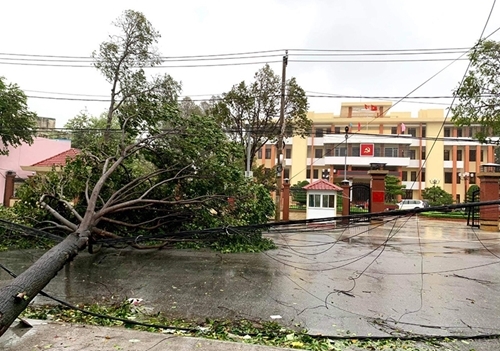According to Director of the National Center for Hydro-Meteorological Forecasting Mai Van Khiem, the storm entered the East Sea gusting up to 88 kilometers per hour around 30 hours it hit the Philippines with velocity of up to 183 kilometers.
It will make landfall with wind speeds of 60-75 kilometers per hour, and there is a little chance for it to gain strength, he said.
    |
 |
|
Quang Ngai city hit by Storm Molave, the ninth storm to hit Vietnam this year. Photo: qdnd |
From 1 a.m. on November 3 to 1 a.m. on November 4, the storm is 310 kilometers southeast of Vietnam’s Hoang Sa (Paracel) archipelago, and moves westwards at 10 kilometers per hour.
For the next 24 hours, it will lay centered around 190 kilometers off the waters from Quang Ngai to Khanh Hoa provinces, with the strongest winds of up to 90 kilometres per hour.
From 1 a.m. on November 5 to 1 a.m. November 6, the storm is expected to move southwest, and weaken to a low tropical pressure zone.
Khiem said heavy rain will blanket the Central region from November 4.
Provinces from Thua Thien - Hue to Phu Yen and north of the Central Highlands will see average rainfall of 100-200mm from November 4-6.
Provinces from Nghe An to Quang Tri will see average rainfall of 150-300 m from November 5 to 7. Flood warnings have been issued in river areas in provinces from Quang Nam to Quang Ngai.
At a meeting of Central Steering Committee for Natural Disaster Prevention and Control on November 2, Minister of Agriculture and Rural Development Nguyen Xuan Cuong said that Goni was a super typhoon that lost strength when entering the East Sea.
“It’s difficult to predict the storm's developments, however,” he said, calling for close observation of the storm.
“We must prepare for the possibility of flash floods, landslides and damage to dams and reservoirs,” Cuong said.
Source: VNA